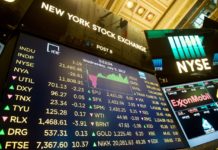December is almost over, and that means it’s time to take advantage of the January effect.
If you dare.
It worked 62% of Januaries from 1928 to 2018, but that also means it didn’t work 38% of those years.
However, studies have verified it exists. Or, at least, did exist. One study examined stocks from 1904 through 1974 and found returns in January to be five times greater than every other month.
What is the January Effect?
It’s the tendency for the stock markets in general – but especially small-cap stocks – to rise in January.
Therefore, if you want to play the game, you buy stocks in December, then hold through January, and sell for a profit.
What Explains the January Effect?
Nobody knows for sure.
One likely factor is how mutual fund managers want to “dress up” their holdings for the final quarter of the year. See, mutual funds tell investors what they are holding in their annual – the stocks they hold as of the end of the year.
Most of the year, fund managers put investor money into small companies they believe are going to grow in the future, making the fund manager look good, so they keep their job.
However, the theory goes, many investors in mutual funds are not comfortable with SmallCap, Inc and The Unknown Company. They want to see familiar names such as Facebook and Walmart.
Therefore, before December 31, the fund managers all sell SmallCap, Inc and The Unknown Company – and buy Facebook and Walmart.
So their fund investors don’t realize they owned SmallCap, Inc and The Unknown Company 90% of the year. The annual report just tells them what the fund owned as of December 31. That’s known as “window dressing.”
Seeing Facebook and Walmart in their funds at the end of the year makes the fund investors happy. But SmallCap, Inc and The Unknown Company have dropped in price because all the fund managers sold their shares.
What Happens in January?
Having made their investors happy to see they owned Facebook and Walmart as of December 31, the mutual fund managers now want to grow.
Really grow – as they can’t do by holding companies that are already giants. So, behind the backs of their fund investors, they buy back SmallCap, Inc and The Unknown Company.
Therefore, the share prices of small-cap companies go up in January.
Taxes Probably Also Help Create the January Effect
Another large group of investors who sell in December are people who have losses in their investments.
They sell their losers to realize their capital losses, so they can use them to offset their capital gains.
When January comes, those investors take the cash from their December sales and invest in other stocks.
Year-End Bonuses and a Happy New Year?
Many people get Christmas or year-end bonuses late in December. Some of them use it to buy stocks.
Because January’s the beginning of a new year, many people make resolutions to begin saving and investing more money. I believe many people start new IRAs and 401(k) accounts during this period. That sends new money into the market.
Some Scoff, But . . .
Saloman Smith Barney conducted a study showing that from 1979 to 2002, the Russell 2000 index of small-cap stocks outperformed the Russell 1000 index of large-cap stocks by 0.82% in January. But the small caps beat the large caps only in January.
An investment banker named Sydney Wachtel first noticed the January Effect in 1942.
However, it’s now 77 years later, and the January Effect is well-known, so it’s not as large as it used to be. More people are trying to get ahead of it by buying earlier in December.
Therefore, I have to agree the January Effect is an interesting bit of Wall Street lore, but not a dependable way to make money by trading stocks.








